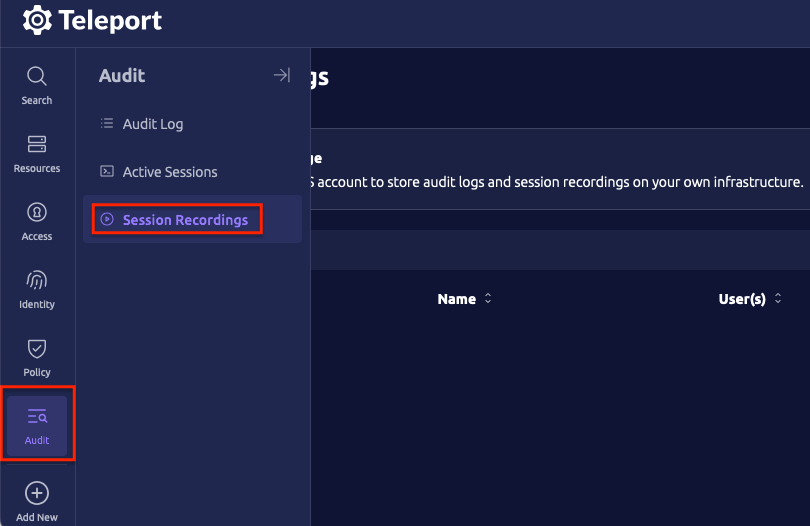Session Recording and Playback
Teleport supports recording and playback of desktop sessions.
Disabling session recording
Session recording is enabled by default, and can be disabled in one of two ways:
Disable session recording at the cluster level
To disable session recording at the cluster level, edit your teleport.yaml
configuration file.
auth_service:
session_recording: off
Disabling session recording at the cluster level applies to all types of recordings. For example, this configuration would prevent Teleport from recording SSH sessions as well as desktop sessions.
The session_recording property can also be configured dynamically by using
tctl to edit the cluster's session_recording_config resource. This is the
required approach for Teleport Cloud users.
Disable session recording via RBAC
Teleport's RBAC system allows more fine-grained control over which sessions are recorded. By default, desktop session recording is enabled. To disable desktop session recording for a particular user, add the following role option to all of the user's roles:
kind: role
version: v4
metadata:
name: no_desktop_recording
spec:
options:
record_session:
desktop: false
Because recording can be important for auditing and compliance concerns, the presence of a single role with recording enabled will result in the session being recorded. In other words, all of the roles applied to a user must explicitly disable recording to prevent the session from being recorded.
See the
Access Controls Reference
for all possible settings in the record_session section.
Playback
Recorded sessions can be viewed in the Session Recordings page under the Activity section in the Management area. Desktop recordings show a desktop icon in the first column to distinguish them from SSH recordings.

Click the play button to open the player in a new tab.
Storage
Be aware, desktop session recordings save PNGs of changing sections of the screen, which means they take up significantly more disk space than SSH or Kubernetes session recordings. When using async recording modes, ensure that the host running Teleport's Desktop Service has sufficient disk space to store recordings that are in progress.
As a point of reference, when a full 1080p screen is redrawn (for example when opening a new full-sized application window), you can expect about 250kb to be saved to disk. If disk space is a concern, we recommend using sync recording and configuring a cloud storage solution such as S3.
Refer to the storage section of the Teleport Configuration
Reference for more information on session
logging and recording management.